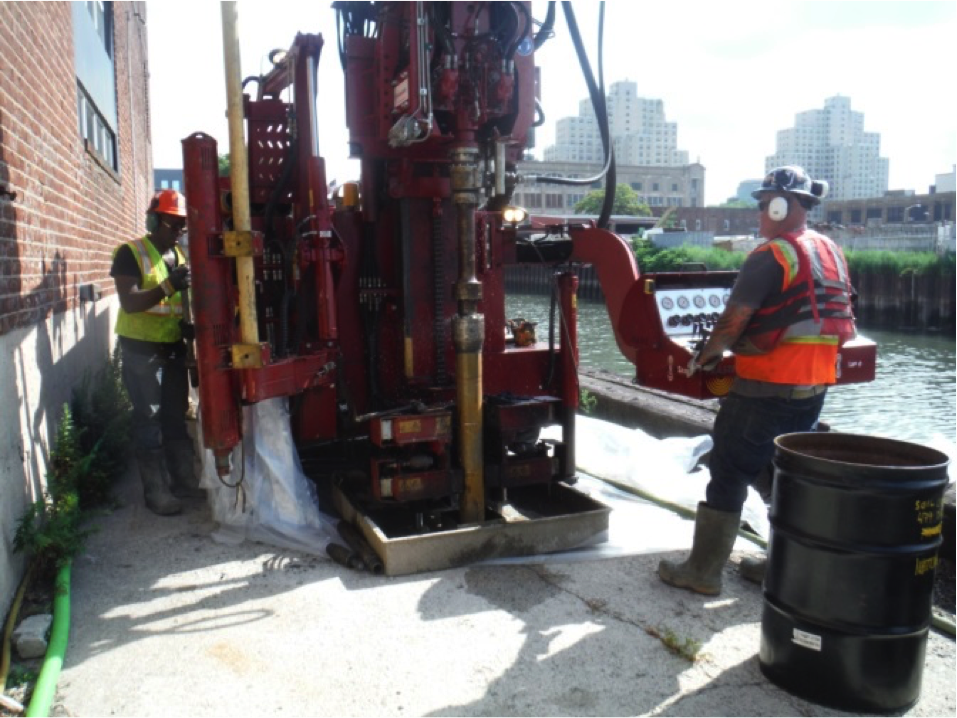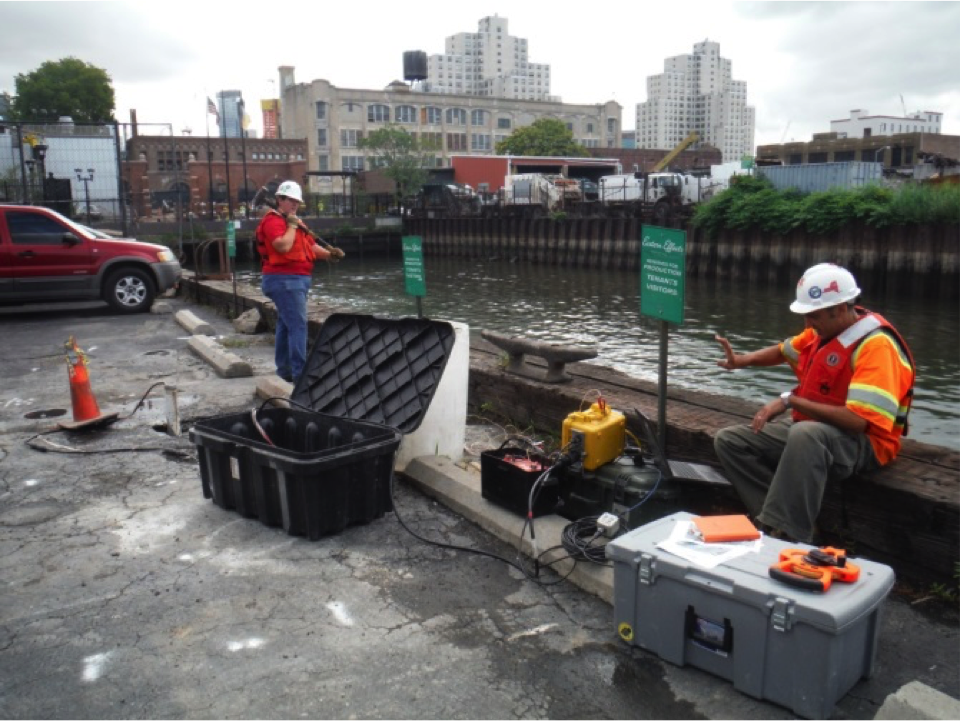The Design Team and its contractors remain engaged in several activities on or near the canal.
Drilling for Bulkhead Study
In August, the field team will conclude the first phase of canal bulkhead assessments. This work included soil sample collection, geophysical tests and boring installation. This study provides valuable information about the structure of the existing bulkheads and assesses their stability under current and anticipated future conditions. The results of the assessment will help us understand how the bulkheads may behave during and after remediation.
Non-Aqueous Phase Liquid (NAPL) Mobility Study
A full-scale study of the presence of Non-Aqueous Phase Liquid (NAPL) in the canal began in late July and will continue into October. The study will use specialized tools to assess the presence, distribution and mobility of NAPL within the sediments. We will also collect samples to determine the presence of soft versus native sediment. Results of this study will be used to confirm existing models and help refine dredge and cap designs.
Field Collections for Laboratory Studies
Throughout August we will collect samples of soft sediment, native sediment and surface water for several studies. We will use the samples to:
Compile information about sediment and determine proper ways to handle and dispose of it for future remedial design activities. We will then give the data to potential vendors to confirm if they can accept and manage the dredged sediment as well as the potential cost.
Understand the ability for bacteria within the sediment to produce gas that could move contaminants to the water in the canal. Results will be used in existing models that will help choose the best remedial design options.
Evaluate capping materials that will limit the movement of contaminants from the sediment to the surface water. We will use water and sediment samples to mimic conditions from specific parts of the canal and apply the results to the remedial cap design.
Baseline Noise and Vibration Study
Our efforts to remediate the canal will require equipment that may create noise and ground vibrations adjacent to the work area. To minimize potential effects during construction we will first implement a three-week study to establish the everyday levels of noise and vibration. Teams will set up vibration monitoring stations and noise monitor stations to collect the needed data. The results will also help us identify methods to mitigate noise and vibration from remedial activities.
Photos from Ongoing Work

The field team prepares a drill rig on the canal bank for sample collection to determine the stability of existing bulkheads along the canal.

Staff conducts one of many geophysical tests to determine the stability of existing bulkheads along the canal.

The field team sets up equipment during the NAPL mobility test conducted from a barge in the canal.
